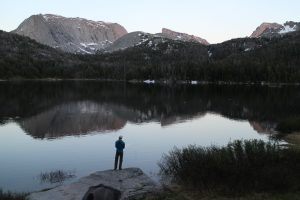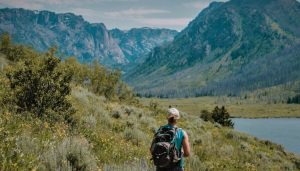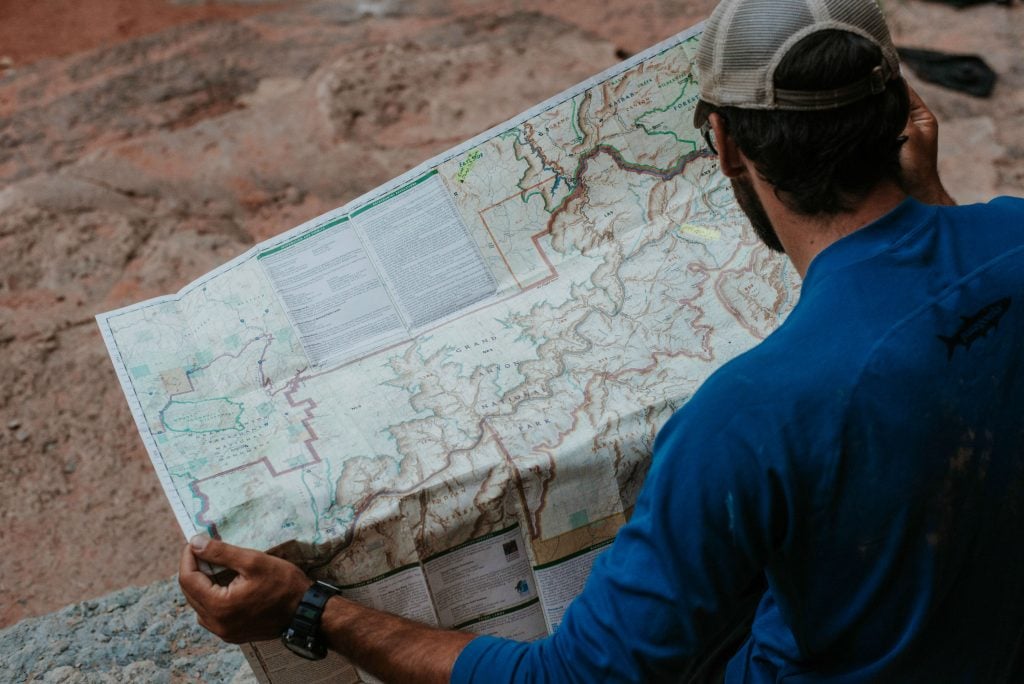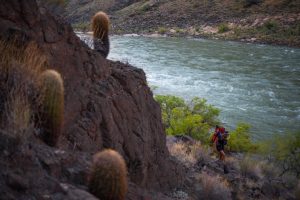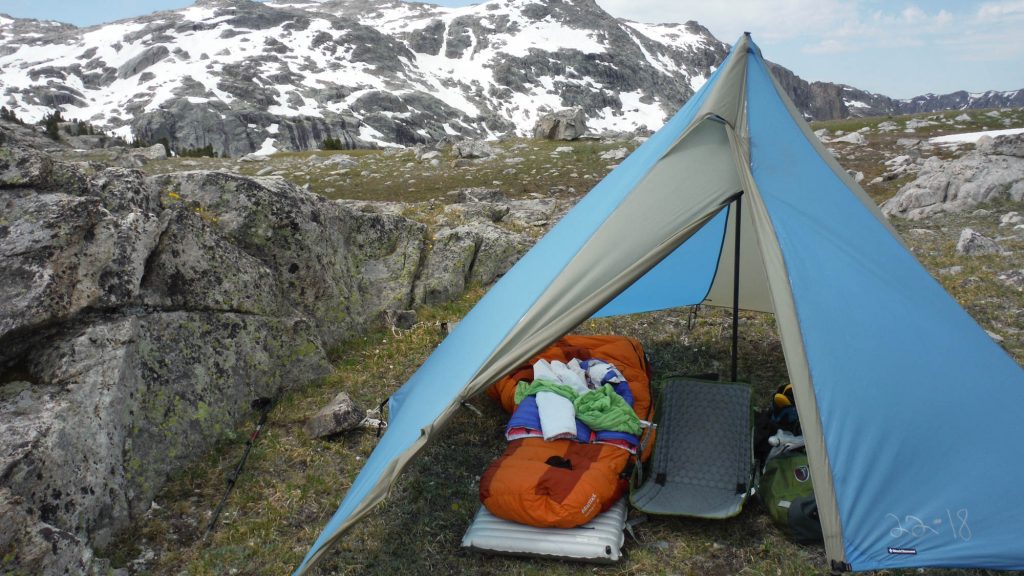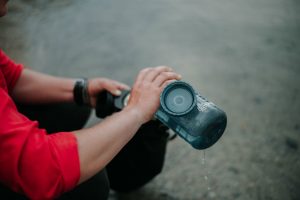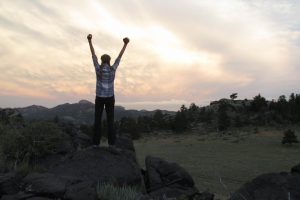Planning and Taking a Solo Backpacking Trip
Alone. In the Wilderness.
That phrase conjures up all sorts of images and stories from Jack London books of the frontier to the infamous story of Into the Wild. Getting lost, frozen, hurt, hunted by animals, or poisoned by eating food you shouldn’t, there are so many things to fear about going into the wilderness, let alone by yourself and hiking alone. So why do it?
Well, to that I’d say, because Jesus did for starters. But why have I gone on backpacking and canoeing solo trips? I mean as a woman alone in the wilderness the risk is still high and there are so many things to fear for sure. But the rewards truly do outweigh the risks.
The first time I ever solo backpacked was in early October of 2003. I planned to backpack a section of the Superior Hiking Trail in northern Minnesota. I decided to go by myself because no one else in my friend group at the time were interested in camping when it wasn’t the 4th of July. So I made the choice to plan out the trip knowing I had some experience in leading others, so it should be much easier to plan for one person right? How hard could it be!
I told my roommates my itinerary, packed my gear and food, and took off after classes on Friday evening to head to the trailhead 3 hrs north. When I got there, it was dark, storming, and the trailhead was nearly invisible in the dark hardwood forest. I ended up parking in a place that looked like there was a trail, but was no sign near it as lightning flashed. Spooky doesn’t even describe the scene! But, I was determined and so wrote a note that I left on the inside dash of my car saying, “If this vehicle is still here after ______ date, call the authorities.” Grabbed my gear, rain gear on, and started hiking in the deluge.
I promise, it ended well! I end up finding the correct trail and having an amazing experience hiking and camping along the trail including an evening serenade by migrating loons calling to each other. But that first step out of the car left me trembling and fearful to be sure! But here are some things that I have learned in solo camping that can help you too enjoy being outside, alone, on your own adventures in the wilderness.
Start Small
I mean, I know the line “Go big or go home!” is like a one hit wonder right now, but getting used to hiking alone, takes some doing. So start small. Spend a half of a day hiking, then a whole day hiking alone. Get to know your thoughts, rhythms, and hiking speed. It’s different when you hike alone rather than in a group. And most importantly, leave your phone at home, in your car, or on airplane mode. Because getting away from the “noise” of the world, is what solo experiences are all about. Yes, take it with you on a longer trip, but getting used to the quiet and the natural noises around you takes some time.
But, even if you’re gone for half a day or a week, make sure you tell someone where you are going, when you plan on returning, and call or text them when you do get back. This is a healthy habit to get into.
Plan Well
Once you’ve done a few day hikes alone, now try an overnight or a weekend. And, I know everyone says that planning is the essence of every trip, but when you are going solo it truly is the most important detail. When you are planning your solo trip, here are some of the main points you want to hit:
Route:
Have your route dialed. Meaning, have your Plan A, Plan B, and Plan C routes written down and have evacuation plans written down for each plan. This includes how many days you are out, what day you plan to camp at what locations, and what maps you are using. This itinerary is for you AND for other people who you are going to give it to.
Lastly, STAY ON ROUTE! Because if something does happen, people will know where to look for you, will be able to find you, and if necessary, get you to help quicker.
Communication:
As stated above, give your itinerary to one or two people who will be around when you are out. Make sure one person at least has some idea or better yet, experience in the area you are traveling. And, have a plan to contact these people when you return to cell phone service.
This is a vital piece of the planning. Have a plan in place that if they do not hear from you within a certain time frame, to start the emergency plan to find you. No one plans to get hurt or stuck, but it’s nice to know that if something does happen, someone will come looking.
Know before you Go:
It sometimes isn’t practical to only go soloing to places you’ve been. Beside, where’s the fun in that?! It’s definitely part of the adventure to explore places you’ve not been to before. But, when you are going solo, it’s important to really study your maps and talk with some of the employees of that land agency about the area you are going to travel in.
Some things you might want to be aware of are:
- What’s the wildlife’s behavior towards humans in this area?
- What’s the weather usually like?
- What is the wildfire danger level?
- Do I need a permit to camp and where am I allowed to camp?
And other such questions that will help you be successful on your trip. These people are typically being paid to know such things, but other outdoor guiding places will also have good information too if the land agency does not.
Gear & Food
Packing and planning your food and gear is definitely different when you are hiking solo. For one thing, group gear and food that can usually be spread out over a few people, now is solely on your shoulders. You can go two ways: ultra light or heavy. Sadly there’s not much of a middle ground. But, getting down to the “needs” is essential when you are hiking solo.
Gear:
Solo shelters
When I’m hiking solo, I opt for a tarp instead of a full tent. Because I can use the tarp for shelter and use my trekking poles and other things in nature to put it up and have it stay up. Then, I use a homemade nylon bivvy that I put my sleep systems in. The nylon isn’t waterproof like some of them out on the market, but it keeps the damp off my down bag and keeps my thermarest and sleeping bag all together in a burrito-like space so I don’t roll off. It’s perfect in lieu of a ground tarp because it’s small, light, and cost me $6 to make.
Backpack
I have a 75 L backpack. It is large enough to be able to go for several weeks in a group, or solo depending on what you pack. It is what I use to carry all of my gear, clothes, food, and a few non-essentials like a watercolor painting set and a book to read. It’s a bit much for a weekend though. So I use a 55 L pack for shorter trips in warmer temperatures because I can pack less bulky layers. As with smaller spaces, you do have to be more intentional about what you pack. So going lighter and smaller is ideal.
Water Purification
Getting a water borne illness is not something I’d recommend! There are lots of great filters out there that are small or you can use an iodine tablet to purify your water. If the water is silty, or not clear, let it sit or try to filter it out with a t-shirt or bandana. Not just for taste, but if you are using iodine, it will purify the silt and not kill any of the beasties in the water.
Layers
Layers are important. Having a set of clothing for hiking, one for in camp, and one for sleeping is key. It’s not too much and it’s enough to go for several weeks or a weekend. In addition to basic layers, having a warm fleece or down jacket and pants, and rain gear is essential to your personal clothing items to keep you warm, dry, and enjoying yourself in the wilderness.
Food:
For food on a solo trip, meal planning is the best way to go. Because this way, you won’t be over packing for your trip. If I’m going for a weekend, I literally only pack the amounts I need for each meal, and an extra breakfast and dinner. I may pack a few extra snacks just in case, but not more than that. Where most people would pack just the bare minimum, I pack an extra few meals in case I get stuck and have to wait out weather. For more information on how to pack and plan for meals, read https://srom.org/blog/backcountry-nutrition-an-introduction/ for more details.
Other additions
I pack my bible, journal, and watercolor set with me when I go solo backpacking. I also take my phone for photos and in case of an emergency, a small first aid kit. These little personal additions are what make my solo hiking some of my favorite backpacking experiences!
Because in these solo times of hiking alone, cooking alone, and being in camp alone, I get to spend that time with Jesus! I get to enjoy the quiet beauty of the natural world that God created for me and all humanity to enjoy. But also, I get to worship Him in these quiet moments of painting, hiking, or watching the sun slip behind the peaks that day. Each has a quiet beauty, and yet an amazing heavenly song to sing that I would not have experienced the same way surrounded by other hikers in a group.
Hiking with a group in the wilderness has so much value too. But it’s in those silent moments that I really learn more about who God is, and who I am in Him. So I echo God’s command, “Fear not for the Lord your God is with you.” And go seek Him alone in the wilderness, and listen for what He wants to share with you.
